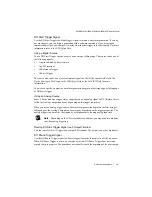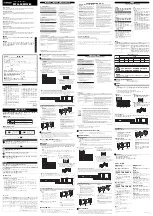
4-4
|
ni.com
Chapter 4
Digital Input/Output and PFI
Using an External Source
You can route the following signals as DI Sample Clock:
•
Any PFI terminal
•
Analog Comparison Event (an analog trigger)
You can sample data on the rising or falling edge of DI Sample Clock.
DI Start Trigger Signal
Use the DI Start Trigger (di/StartTrigger) signal to begin a measurement acquisition. A
measurement acquisition consists of one or more samples. If you do not use triggers, begin a
measurement with a software command. Once the acquisition begins, configure the acquisition
to stop in one of the following ways:
•
When a certain number of points has been sampled (in finite mode)
•
After a hardware reference trigger (in finite mode)
•
With a software command (in continuous mode)
An acquisition that uses a start trigger (but not a reference trigger) is sometimes referred to as a
posttriggered acquisition. That is, samples are measured only after the trigger.
When you are using an internal sample clock, you can specify a delay from the start trigger to
the first sample.
Using a Digital Source
To use DI Start Trigger with a digital source, specify a source and a rising or falling edge. Use
the following signals as the source:
•
Any PFI terminal
•
Counter
n
Internal Output
The source also can be one of several other internal signals on the cDAQ controller. Refer to the
Device Routing in MAX
topic in the
NI-DAQmx Help
or the
LabVIEW Help
for more
information.
Using an Analog Source
Some C Series modules can generate a trigger based on an analog signal. In NI-DAQmx, this is
called the Analog Comparison Event. When you use an analog trigger source for DI Start
Trigger, the acquisition begins on the first rising edge of the Analog Comparison Event signal.
Note
Depending on the C Series module capabilities, you may need two modules
to utilize analog triggering.
Routing DI Start Trigger to an Output Terminal
You can route DI Start Trigger to any output PFI terminal. The output is an active high pulse.
















































